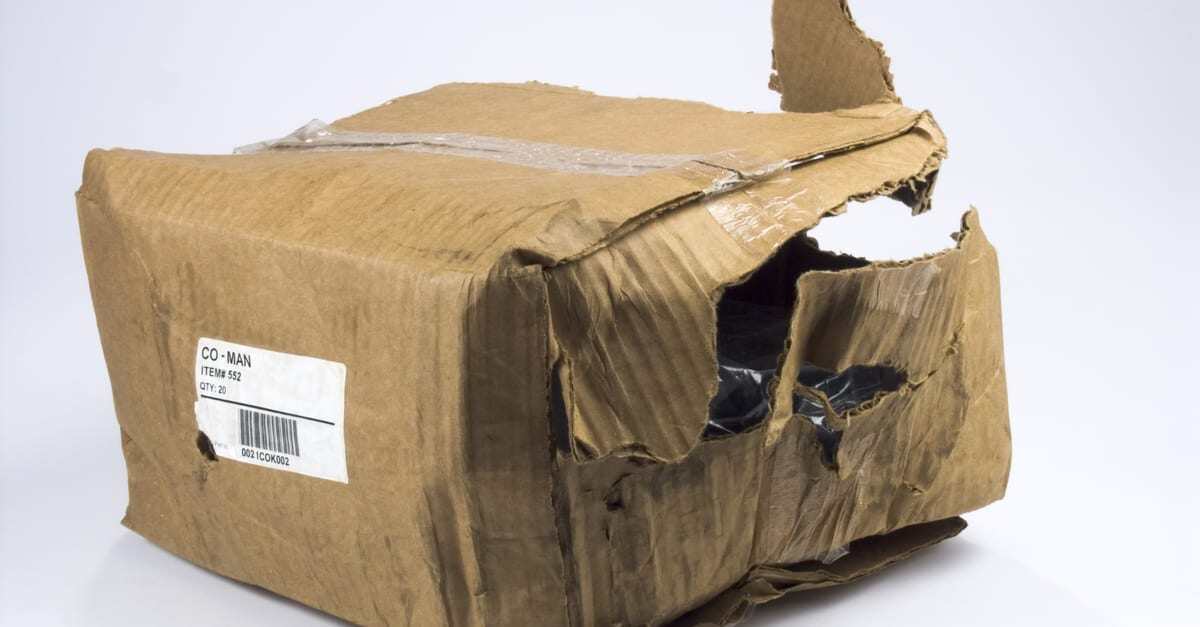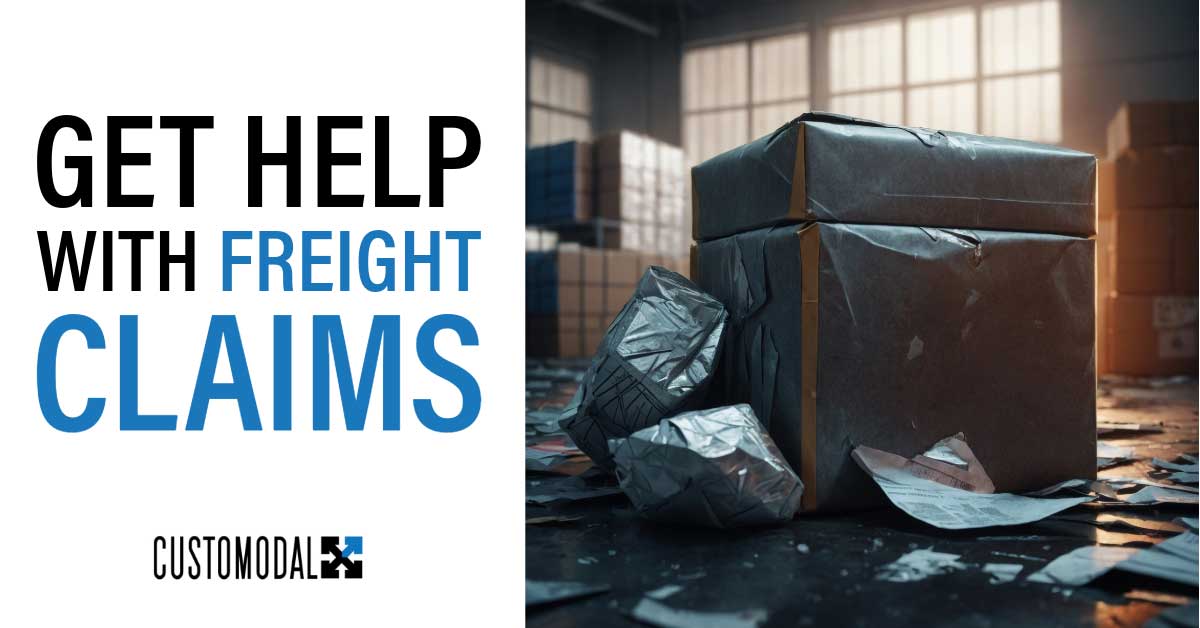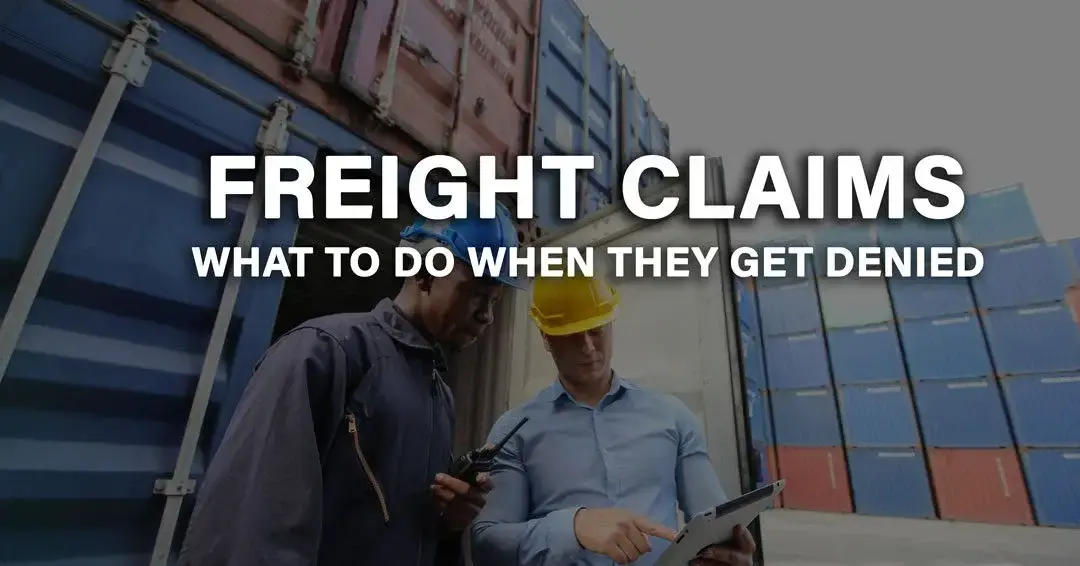
If you own a shipping or freight company, then you definitely know the financial impact freight claims can make on your business. Keep reading to learn how to fight a freight claim.
A freight claim is a breach of contract claim that the shipper or consignee can make against the transporter or carrier for damage, loss, or shortage. The legal concept is for the shipper to be “made whole” or to be put into the same place he/she would have been, had the shipment occurred as planned.
Other terms for freight claim include cargo claim, transportation claim, shipping claim or loss, and damage claim.
The legal concept behind a freight claim is to make the claimant “whole” again. That is to say, to put them in the position they would have been in had the loss never have occurred. Generally, speaking, that would be replacement costs on goods lost or damaged or reimbursement of excessive fees charged.
Understand, a freight claim is not based on negligence on the part of the carrier. A freight claim is based on breach of contract law. The contract between the transporter and the claimant reflects that the transporter will transport the goods, of whatever type, from location A to location B in the same condition in which they were put into the transporter’s care.
Should damage occur to the goods or part of the goods becomes lost or stolen, this breaches the foundation of the contract.
In order for a claim to be filed, the shipper or consignee must establish the following three (3) elements.
- That the shipment was delivered to the carrier in good condition.
- That delivery to the consignee was short goods, had goods damaged or was delivered unreasonably late.
- The amount of damages incurred.
In order to win the claim, the carrier then must be able to show that they were not negligent AND one of the following five (5) affirmative defenses must apply.
- Act of God
- Act of the Public Enemy
- Act of the Shipper
- Act of the Public Authority
- Inherent nature or vice of the goods themselves.
How to Fight a Freight Claim.
There are two participants in every disagreement. We are going to look at both sides of this fight and show the best methods to press your side of the freight claim, whether you’re the shipper, consignee or the carrier.
Shipper or Consignee
If you are a shipper or a consignee that has experienced a loss, here are 8 tips to help you get paid and get paid faster.
- Document the damage. Immediately note any shortage or damage on the bill of lading, preferably before the delivery driver has left. Though this does not guarantee resolution, it goes a long way with the carrier to prove the loss. Use as much detail as possible, including photographs if you have a smartphone available. Inform the carrier of the situation as quickly as possible. The carrier has the right to mitigate the loss, meaning the right to try to recover any cost associated with it. Failing to give the carrier enough time to do so can cause a claim to be denied. Carrier mitigation options can include salvage, taking ownership, re-delivery or return of the goods involved.
- Keep the freight. Never discard the freight, even when damaged. Keep it available for inspection by the carrier. Again, that carrier has the right to mitigate the loss. Tough to do if you’ve discarded the damaged goods. There are a few instances where the carrier’s right to mitigate is negated. Those include fresh foods or hazardous materials. Even in those situations, give the carrier every opportunity to reduce their loss. Notify them immediately.
- Carmack Amendment. The Carmack Amendment is a law applied to motor carriers in 1935 by Congress. This amendment governs the rules in interstate shipment and spells out the duties, rights, and liabilities of shippers and carriers. Carmack requires that all parties to a claim mitigate in good faith. That includes the shipper, carrier, and consignee.
- Pay the freight charges. You may be tempted to withhold payment on an invoice that involves damaged goods. Don’t. Those same regulations that state the timelines involved to establish the claim also state the claim must have a paid invoice attached. Nothing like shooting yourself in the foot simply because you’re irritated.
- Understand your Bill of Lading. The Bill of Lading (BOL, FOB or COD) is the governing contract between the parties in lieu of any other form of contract. When shipments cross state lines, Carmack Amendment comes into play. The Bill of Lading also determines what rules will be applied. In interstate or international shipping, the originating location of the bill of lading has jurisdiction. Sound confusing? A shipment from Canada crosses the United States and is delivered in Mexico. A claim is filed. Each country has its own timelines and methods of managing the claim. Who has jurisdiction? Based on the origination of the bill of lading in Canada, you will follow Canadian guidelines.
- Timeliness. Any claim needs to be filed ASAP. Under Carmack, for American carriers, a carrier must acknowledge a filed claim within 30 days. Final disposition of the claim must be provided in writing within 90 days of filing. The claimant has 2 years and 1 day to dispute the disposition. Did you see where I said how long you have to file? No? Because I didn’t. Carmack does not specify a timeframe. It does state they cannot enforce a time limit of less than 9 months. However, it is industry standard for a 9-month window to file that claim and is, in fact, written into most common carrier contracts. Those are American timeframes. Canada originated bills of lading offer a claim window of 60 days from delivery or 9 months in the event a delivery is not made.
- Know the Maximum Freight Claims Liability Amount. Just like timeframes, each country has their own maximum liability amount per freight claim. In Mexico originating bills of lading, the maximum freight claim liability amount is 2.8 U.S. cents per pound. Canadian originating bills of lading have a maximum freight claim liability amount of $2.00 CAN per pound. The United States does not have a per-pound maximum liability amount. In the U.S., the carrier is liable for the actual value of the shipment, unless other agreements have been made with the shipper. But, many carriers limit their liability through contracts.
- Profit. Very important, please pay attention. YOU CANNOT PROFIT FROM FREIGHT CLAIMS. I hope I made this clear. This gets really complicated and the value is determined, in part, by ownership of the goods when the loss occurs. If a manufacturer ships goods to a distributor and the goods are damaged in transit, the party that “holds title” to the goods during that time frame will determine if the value is based on manufacturing costs or purchase costs. If the manufacturer is determined to hold the title, they are only entitled to the cost of manufacturing, not the profit that they would have made on the sale. Clear as mud, right?
Carrier
If you are the carrier or transporter of goods and a freight claim has been made against your company, how can you fight it? There are a few options. Under the Carmack Amendment, there are five (5) liability exceptions. Understand, the burden of proof that one of these exceptions applies, unfortunately, falls on you.
- Act of God. This is a significant, unexpected event, that leads directly to the loss in question. Example? A tornado in Kansas blew over the trailer containing television sets. All sets were damaged. Another example would be the driver having a heart attack while operating the vehicle. It is important to note that the guideline here comes from Standard Brands, Inc. vs. Nippon Yusen, where the decision states that the carrier may be held liable if they “failed to act as a reasonable prudent person would under the circumstances and failed to take reasonable available means to avoid or minimize the loss resulting therefrom.” If there have been 5 days of hurricane warnings in the area and an order to evacuate, damage incurred during that hurricane would not meet the Act of God criteria as there was adequate time to mitigate the damage and minimize the loss.
- Public Enemy or Act of War. This is pretty straight forward. However, do not misunderstand the words “Public Enemy”. We’re not talking about the FBI Public Enemy list or a Mafia hit. We’re talking about governmental enemies. How a terrorism situation, particularly a domestic terrorism situation would fall into this category is still a big question. I’m sure future case law will address this.
- Act or Default of Shipper. If it can be shown that the damage that occurred was the fault of the shipper rather than the carrier, this exception can be utilized. Perhaps the shipper packaged the goods improperly. Maybe they loaded the trailer and the load was not done correctly. These are the sort of shipper acts that could qualify. Errors in product provided can also fall under this exception, as well as errors in the way the contents of the load are described on the bill of lading.
- Public Authority. If the cargo damage is the result of a public authority (translate to government), the carrier may not be liable. Examples would include quarantine, road closures, product recall or trade embargoes.
- Inherent Vice. This sounds fun. This relates to goods that are naturally subject to breakdown or decay with the elapse of time. Examples include cheese, fruits, vegetables, dairy or tobacco. The carrier must be able to show that the inherently unstable aspect of the cargo caused the damage, not negligent handling on their own part.
Final Thoughts
Shipping goods is a complicated logistical nightmare. Timing, delays, costs, and yes, freight claims are all a part of the process.
Managing those claims, whether as a shipper, consignee or carrier, depends on paying attention to the details. Working in tandem with all involved to reduce or mitigate any loss suffered by any party.
No carrier goes out for the day with the intent to destroy the goods they are carrying. No driver intentionally crashes the truck or runs the pallet over the edge of the dock. However, sometimes stuff happens.
That is why liability insurance exists and that is why carrier’s pay for it. And it isn’t cheap.
However, some level of responsibility for covering the risk of loss does fall on the shipper and/or consignee, as well.
If you have a contractual arrangement with a carrier, READ THE CONTRACT. Make certain you understand the financial limits of their liability coverage and, if it is inadequate, buy freight insurance. It’s your investment and your goods, protect them.
When the worst happens and a loss occurs, all parties should try to mitigate the loss. This is so fundamentally the right thing to do that it is an actual step in the claim process. Failure to attempt to mitigate is enough to have a claim denied or substantially reduced.
If you are a shipper or consignee and a loss occurs, think for just a minute what information you would need if you were the shipper and PROVIDE IT. You can’t seriously expect them to cover a claim with no evidence of loss, can you? Take those pictures, notate that bill of lading, inform them so that they may begin that mitigation process. Be cooperative.
In business and society, there is a tendency to have an us vs. them mentality. There is no need in this arena. The shipper, carrier and consignee are all partners with the same end goal. They all want the goods moved from the shipper to the consignee in good condition, on time and as ordered. That’s the nature of the business.
When that “something” happens, remember they are still your partner. By acting in a professional and business-like fashion, reputations can be enhanced, and the business partnership strengthened. Failure to act professionally will damage that partnership beyond repair.
Freight claims are a pain for everyone involved, yet they cannot be avoided. They can, however, be managed with professionalism and serve as a conduit of respect between the parties involved.



